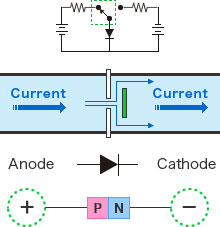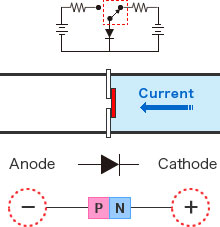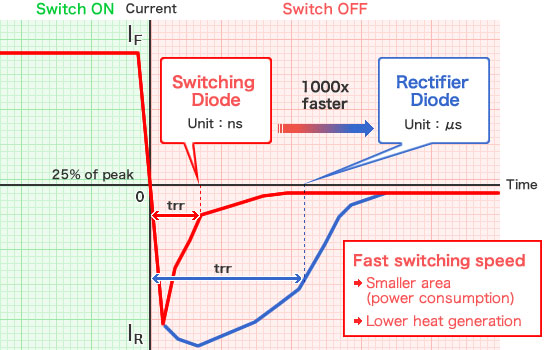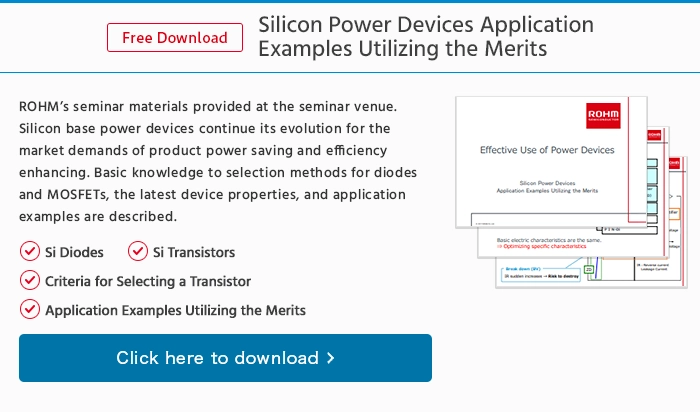Switching Diode (SW)
Structure and Features
| Structure | Symbol | Applications・Characteristics |
|---|---|---|
 |
 |
|
Silicon switching diodes are known for their fast switching speed, small size, long life, and high reliability, making them suitable for various electronic circuits.
These diodes provide switching operation. Supplying voltage in the forward direction will cause current to flow (ON). Conversely, applying voltage in the reverse direction will stop current flow. High-speed switching diodes are normally characterized by shorter reverse recovery times (trr), resulting in better switching performance.
| Switch ON | Switch OFF |
|---|---|
 |
 |
What is Reverse Recovery Time (trr) in Diodes?
The reverse recovery time trr refers to the time it takes for the switching diode to turn completely OFF from an ON state. Generally, electrons cannot be stopped immediately after operation turns OFF, resulting in some current flow in the reverse direction. Under reverse bias conditions, the diode's behavior changes significantly, affecting the movement of minority charge carriers and the overall switching performance. The higher this leakage current is, the greater the loss. However, reverse recovery time can be shortened through heavy metal diffusion, material optimization, or by developing FRDs (Fast Recovery Diodes) that suppress ringing after recovery.

Key Points in Switching Circuits
- Trr refers to the time it takes the current to disappear after voltage switches to the opposite direction.
- A shorter trr translates to lower loss and higher switching speeds.
- When forward biased, a diode allows current to flow through and acts as a closed switch in a circuit.
- Switching diodes are specially designed for 'on' and 'off' functions in a circuit and have a short reverse recovery time, allowing them to transition quickly from the on-state to the off-state, demonstrating their switching function.





